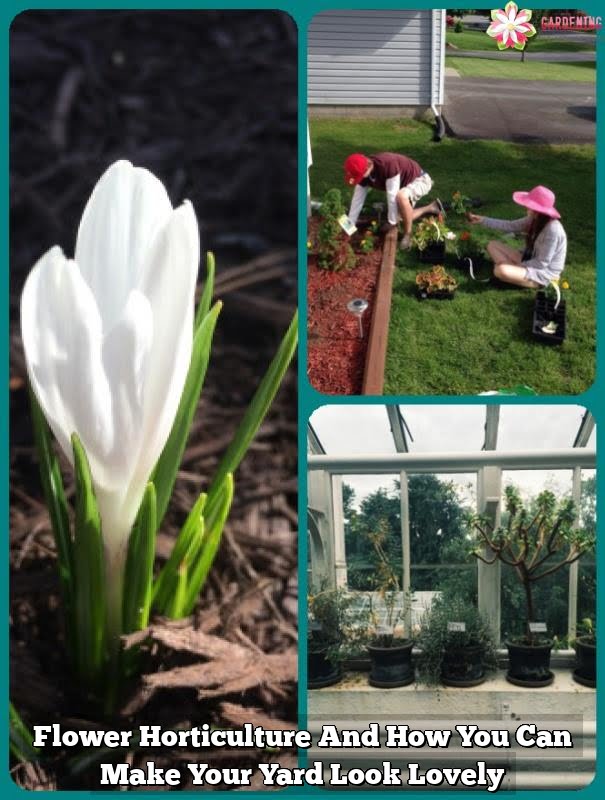One great way to improve your diet is through organic horticulture.You do have to put in some effort, however.This can leave you wonder where to start when it comes to organic garden.
Plant perennials that are resistant to slug and snails won’t be interested in eating. Slugs or snails are voracious eaters that can kill a plant literally overnight. These pests are particularly fond of young perennials and those varieties with leaves that are tender, smooth, particularly seedlings and young plants. Some perennials, especially if their foliage is hairy and tough, tough leaves or a taste that isn’t appetizing. Some of these plants include achillea, campanula, campanula, hellaborus, and heuchera.
Pick the correct soil in order to get the best outcome. You may also be able to design an artificial plot with just one type of soil.
Early Spring
Bulbs are a great option for people who want to enjoy in early spring and summer flowers. Different bulbs bloom at various times, so if you choose appropriately, you may have blooms early spring to later summer.
Pre-soak your seeds through the night in a dark place. This hydrates your seeds to be hydrated and jump-starts their growth. The seeds will have a better chance of surviving and grow up.
If the soil in your garden has a high concentration of alkaline, you can mix the dirt with used coffee grounds.This is an easy and cheap way to increase the acid levels in your dirt. This solution will make the vegetables that taste better and look more appealing.
Knee Pads
Get some horticulture knee pads if you have low-growing plants. Having a good pair of excellent knee pads will cushion the knees to provide additional comfort.
Learn the appropriate time for each kind of vegetable you plant. Each variety needs a slightly different amount of growing time for picking for the best flavor. For example, zucchini and baby peas have the best taste when you pick them early. Tomatoes, however, are tastiest when they have been allowed to ripen on the vine as long as possible.
Pest control can be very difficult if you are dealing with your veggie garden. One way to control garden pests is to be vigilant. If you catch the pests early, you can remove them by hand effectively.
Rimmed Hats
Wear wide-brimmed hats, wide-brimmed hats, and sunscreen. Protecting yourself from the sun will lower the possibility of sunburn and skin cancer later in life.
If you choose to use organic methods to care for your houseplants, it is vital to make sure that the right amount of light reaches them. If the garden will receive little sunlight, choose varieties of plants which can accept this type of environment. You can also consider using artificial lighting to help.
After sprouting occurs, they require less warmth than they did prior to sprouting. Keep a close watch on your seeds in order to know when to do this.
Pine is a great source of mulch. Cover your beds with the needles, and they will disperse acidity to the soil below as they decompose.
Try to work in your garden chores build up. While you may not be able to spend time in the garden on a daily basis, even little items done daily will stop the mountain of work from growing. For example, if your family is cooking out on the grill, take a few moments to pull some weeds as well.
Laundry Basket
Use an aged laundry basket to help you collect your garden. The laundry basket will function as a perfect strainer for the fruits and vegetables.
Your compost pile should contain green plants and dry plant materials.Green plant material can include old flowers, fruit waste, leaves, grass clippings, and fruit and vegetable waste. Dried plant material, cardboard, can include items such as cardboard, used wood chips and straw. Avoid ashes, meat, diseased plants and meat-eating animal manure.
Create a raised bed for your garden out of stone, brick or untreated wood.Choose wood that is naturally resistant to rot and does not contain any chemicals. The most popular options for this type of project are cypress, locust and cypress wood. In a veggie garden, avoid using treated wood to enclose or demarcate different sections of your vegetable garden. If you have some space treated wood, you can still use it, or a different barrier, be sure to line it with some type of barrier like plastic sheeting.
The bulbs are ripe for harvesting when the green tops turn brown.
Try making your organic garden in the shade. You might be interested to know that these gardens are relatively easy to maintain. They don’t require much watering, and that can save you a lot of time and effort. This could also enable slower growth, but at least there will be fewer weeds to eradicate.
Know how and when the organic plants to be watered. A soaker hose would be the best tool to use. Watering the early in the morning is best.
Use barrels or alternate containers to trap and store rainwater for an organic way to hydrate your garden. This will save you from paying for extra water your garden. You will see that rainwater is a natural friend to plants.
You can save on water by mulching your garden. You can get it from the store, composted lawn trimmings, or dead plant materials. The most important factor is that you use plenty of it.
When planning your garden, consider what kinds you tend to use most often in the kitchen. This will make your food bill every month and allows you to use everything you grow. Don’t waste garden space on growing foods that your family doesn’t enjoy.
Bees are vital in gardening because they promote pollination. There are certain bees, like the carpenter bee, that can be harmful because they eat wood and create their nests inside them. Most bees should be allowed to live freely in your garden for maximum benefits.
As you’ve read, organic horticulture requires work, effort, and research so that you can grow organic plants. Furthermore, you will only see your garden blossom with consistent tending. By keeping in mind the above tips, you’re on the right track towards being successful in your organic garden.

Welcome to my blog about home and family. This blog is a place where I will share my thoughts, ideas, and experiences related to these important topics. I am a stay-at-home mom with two young children. I hope you enjoy reading it! and may find some helpful tips and ideas that will make your home and family life even better!





